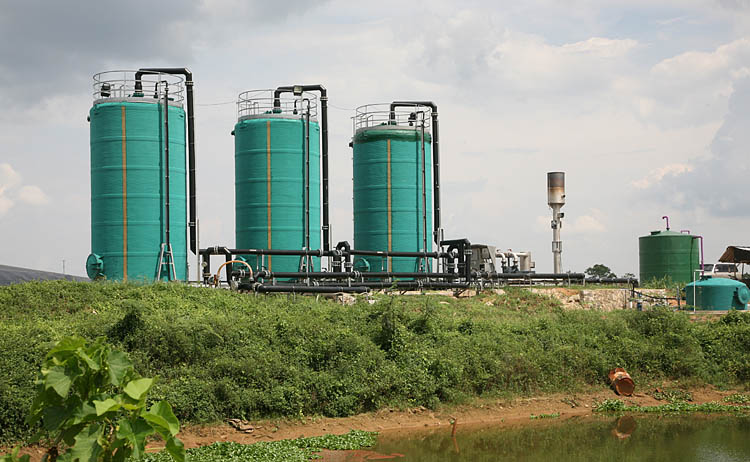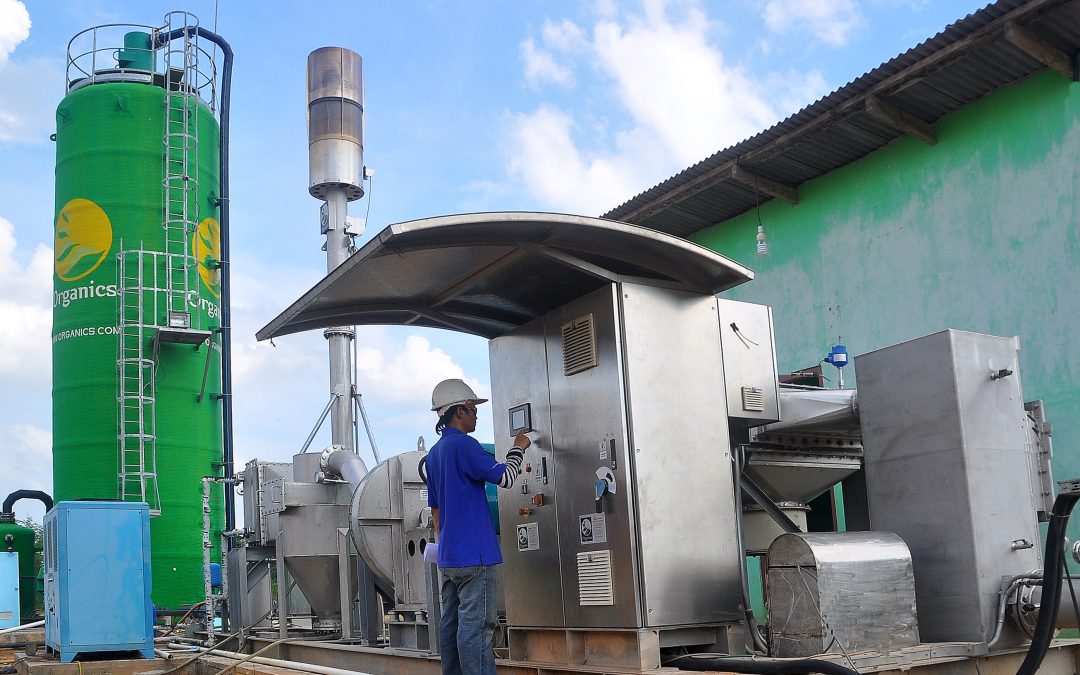Anaerobic digestion is a naturally occurring process. Often though, toxic gases can be produced. In particular, it is often required to remove H2S that is a normal corollary of using this technique within large-scale engineered facilities.
Recently anaerobic digestion techniques have become established technology to reduce the organic loading of wastewater from a variety of industrial processes, including palm oil effluent and the production of tapioca.
The process of degradation of organic material during anaerobic digestion of organic matter not only produces methane and carbon dioxide it can also lead to the production of other trace gases, such as hydrogen sulphide. As well as being a considerable health and safety hazard, if not treated hydrogen sulphide causes serious corrosion damage to metal components in engines, burners and boilers, and other process equipment. The treatment of hydrogen sulphide and H2S removal from biogas is therefore crucial to the safe management and operational viability of any commercial or long-term process application.
H2S can be removed from gas streams by means of several established technologies. These include caustic scrubbing with biological conversion of the H2S, and iron-based liquid “redox”.
Another widely employed technology is the use of biological mechanisms to remove H2S. The main advantage of a bio-scrubber is that in most circumstances there is no cost incurred for chemical-additions. The bacteria involved (genera thiobacillus) are ubiquitous and, if the correct environmental conditions are maintained, the bacteria will function reliably and predictably in the removal of hydrogen sulphide from gas streams.

One of the most important parameters to consider when designing a bioscrubber is the capacity of the plant, a critical feature for the successful long-term operation. The size of the bioscrubber is directly proportional to the concentration of the hydrogen sulphide that requires treatment. If, for any reason, the hydrogen sulphide concentration was to increase from, say, 2,000 ppm to 4,000 ppm, the treatment unit would need to be twice the size to be able to have the same effect at removing H2S in the discharge flow. As H2S poisoning of biogas can have highly damaging effects on mechanical equipment, it is normal to install equipment that has a system of alarms to prevent catastrophic failure due to an unexpected or rapid increase of the H2S concentration.
The effluent from an H2S bioscrubber is an acidic solution of sulphate with a pH value of between 0.5 and 6.0, subject to operational settings. With the lowest pH value, the effluent is not highly corrosive as it would correspond to a maximum of 3% sulphuric acid. However, care should be exercised in the selection of construction materials as, even though it is not highly corrosive, over the long-term some corrosive action may be expected.
H2S treatment and removal is an important aspect of any engineering project that uses anaerobic digestion to produce biogas. Biological techniques to remove H2S have been proven to be effective and efficient method for its long-term treatment and elimination.

